Quick Start
Gaming Router and Mesh WiFi System
Model XRM570
1. Unplug your extender and move it to a new location.
We recommend that the new location be about halfway between your router
and the area with a poor WiFi signal.
The extender must be within the range of your router WiFi network.
2. Power on your extender.
3. Use the Router Link LED
to nd a spot where the extender-to-router
connection is optimal.
This LED indicates the WiFi connection between the extender and the router:
Solid white. Best connection.
Solid amber. Good connection.
Solid red. Poor connection.
Off. No connection.
Note: If the Router Link LED doesn’t light solid white, we recommend that
you move your extender closer to your router and check the LED again.
Thank you for purchasing this NETGEAR product. You can visit
www.netgear.com/support to register your product, get help, access the latest
downloads and user manuals, and join our community. We recommend that you
use only ofcial NETGEAR support resources.
Si ce produit est vendu au Canada, vous pouvez accéder à ce document en
français canadien à http://downloadcenter.netgear.com/other/.
(If this product is sold in Canada, you can access this document in Canadian
French at http://downloadcenter.netgear.com/other/.)
For regulatory compliance information including the EU Declaration of
Conformity, visit https://www.netgear.com/about/regulatory/.
See the regulatory compliance document before connecting the power supply.
Support
NETGEAR INTL LTD
Building 3, University Technology Centre
Curraheen Road, Cork, Ireland
NETGEAR, Inc.
350 East Plumeria Drive
San Jose, CA 95134, USA
© NETGEAR, Inc., NETGEAR and the NETGEAR Logo are
trademarks of NETGEAR, Inc. Any non-NETGEAR trademarks
are used for reference purposes only.
After the setup, your extender uses the same WiFi settings as your router. Use
your router’s WiFi network name and password to connect your WiFi-enabled
devices to the WiFi network.
We recommend that you enable the Smart Connect feature on your router and
the One WiFi Name feature on your extender. When these two features are
enabled your network broadcasts one WiFi name only:
• On your router, if you enabled the Smart Connect feature, your router uses
the same WiFi settings for its 2.4 and 5 GHz WiFi networks.
• On your extender, the One WiFi Name feature is automatically enabled after
the setup, which allows your extender to use the same WiFi network settings
as your router.
Find a good spot for your extender
Connect your devices to the WiFi network
1. Press the WPS button on the extender until the WPS LED blinks white.
2. Within two minutes, press the WPS button on your router.
When the extender connects to the router, the Router Link LED lights.
If the Router Link LED lights white, the connection between your router
and extender is good. If the Router Link LED lights amber or red, move the
extender closer to the router and try again.
Note: If your router supports the 5 GHz band and your extender didn’t
connect to that band, repeat the WPS process.
Troubleshooting
After the installation is complete, if the Router Link LED on your extender is
not lit, your extender didn’t connect to your router.
You must use WPS to connect your extender to your router.
Log in to your extender
After installation, your extender uses the same login user name and password as
your router. You can log in to your extender to view or change your extender’s
settings.
1. Launch a web browser from a computer or mobile device that is connected to
your extender network.
2. Log in to your extender:
• If you did not enable the One WiFi Name feature, enter
www.mywiext.net in the address eld of the browser.
• If you enabled the One WiFi Name feature, enter one of the following
URLs:
- Windows-based computer. http://mywifiext.local or http://mywifiext
- Mac computers and iOS devices. http://mywifiext.local
- Android devices. http://<extender’s IP address>
(for example, http://192.168.1.3)
To nd your extender’s IP address, do the following:
a. Log in to your router.
b. Find the page in your router web interface that lists the devices
connected to your router.
c. Find your extender in the list and note your extender’s IP address.
d. Enter your extender’s IP address in the address eld of your web
browser.
A login page displays.
3. Enter your router’s admin user name and password and click the LOG IN
button.
The Status page displays.
Log in to your router
After installation, you can log in to your router to view or change your router’s
settings.
1. Launch a web browser from a computer or mobile device that is connected to
your router network.
2. Enter http://www.routerlogin.net.
A login window opens.
3. Enter the router admin user name and password.
The user name is admin. The password is the one that you specied the rst
time that you logged in.
The user name and password are case-sensitive.
The Dashboard displays.
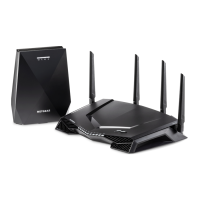
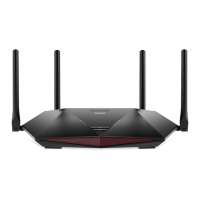
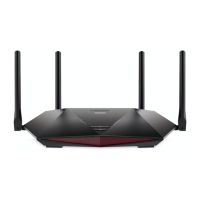
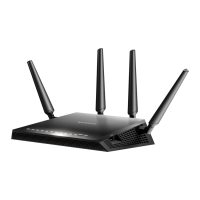
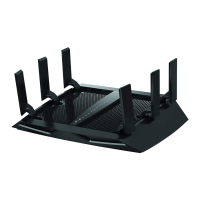
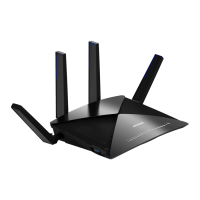
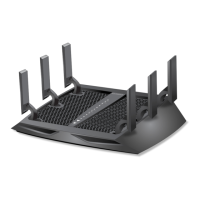
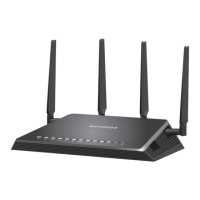
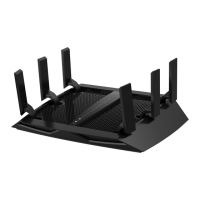
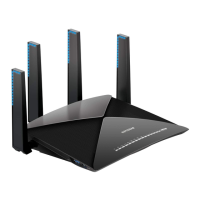
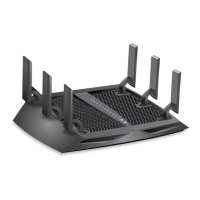
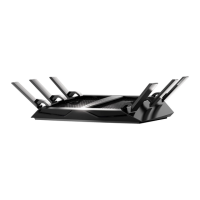
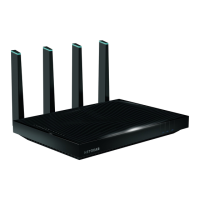
